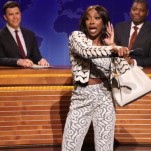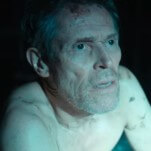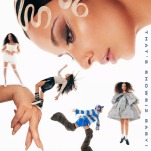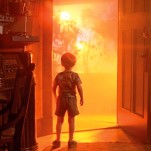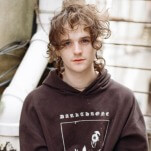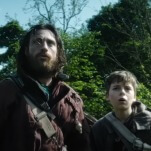The 40 Best Horror Movies on Amazon Prime Video Right Now (Sept. 2025)
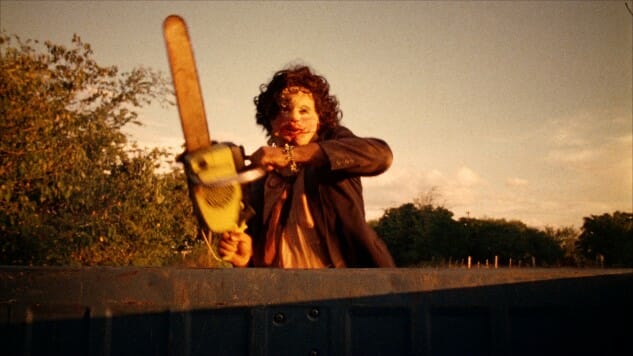
After drawing up huge rankings of the best horror movies on Netflix and the best horror movies on Hulu, it’s safe to say we’ve gotten used to the challenge of diving through the refuse of a streaming service and searching for the gems. But we’ve never really experienced a library with just as much junk and treasure in it as the Amazon movie library. If you’ve been paying attention, then you know this is only compounded by the fact that the “browse” function on Amazon Video is so frequently broken.
That said, Amazon subscribers have access to a wealth of riches, many of them hiding in plain sight. Slowly but surely, they’ve built one of the biggest (and most random) horror streaming libraries. The trick is realizing those movies are there at all. Sure, it’s no surprise that some recent releases are on Amazon Prime, but the service is also packed with more obscure 1980s slashers and zombie movies than you can wave a machete at.
Therefore, fall back on our list of films that are worth your time for one reason or another—just don’t expect to find them via browsing.
You may also want to consult the following horror-centric lists:
The 100 best horror films of all time.
The 100 best vampire movies of all time.
The 50 best zombie movies of all time.
The 50 best movies about serial killers.
The 50 best slasher movies of all time
The 50 best ghost movies of all time.
The best horror movies streaming on Netflix.
The best horror movies streaming on Hulu.
The best horror movies streaming on Shudder.
Here are the 40 best horror movies on Amazon Prime:
1. Let the Right One In
Year: 2008
Director: Tomas Alfredson
Stars: Kåre Hedebrant, Lina Leandersson, Per Ragnar, Ika Nord, Peter Carlberg
Rating: R
Vampires may have become cinema’s most overdone, watered-down horror villains, aside from zombies, but leave it to a Swedish novelist and filmmaker to reclaim frightening vampires by producing a novel and film that turned the entire genre on its head. Let the Right One In centers around the complicated friendship and quasi-romantic relationship between 12-year-old outcast Oskar and Eli, a centuries-old vampire trapped in the body of an androgynous (although ostensibly female) child who looks his same age. As Oskar slowly works his way into her life, drawing ever-closer to the role of a classical vampire’s human “familiar,” the film questions the nature of their bond and whether the two can ever possibly commune on a level of genuine love. At the same time, it’s also a chilling, very effective horror film whenever it chooses to be, especially in the absolutely spectacular final sequences, which evoke Eli’s terrifying abilities with just the right touch of obstruction to leave the worst of it in the viewer’s imagination. The film received an American remake in 2010, Let Me In, which has been somewhat unfairly derided by film fans sick of the remake game, but it’s another solid take on the same story that may even improve upon a few small aspects of the story. Ultimately, though, the Swedish original is still the superior film thanks to the strength of its two lead performers, who vault it up to become perhaps the best vampire movie ever made. —Jim Vorel
2. The Wailing
Year: 2016
Director: Na Hong-jin
Stars: Kwak Do-won, Hwang Jung-min, Chun Woo-hee
Rating: NR
The U.S. title of Na Hong-jin’s new film, The Wailing, suggests tone more than it does sound. There is wailing to be heard here, yes, and plenty of it, but in two words Na coyly predicts his audience’s reaction to the movie’s grim tableaus of a county in spiritual strife. Na trades in doubt and especially despair more than in what we think of as “horror.” He isn’t out to terrify us. He’s out to corrode our souls, much in the same way that his protagonist’s faith is corroded after being subject to both divine and infernal tests over the course of the film. The Wailing unfolds in Gokseong County, an agricultural community nestled among South Korea’s southern provinces. It’s a lovely, bucolic setting that Na and his cinematographer, the incredible Hong Kyung-pyo, take fullest advantage of aesthetically and thematically. The hushed serenity blanketing The Wailing’s opening images creates an atmosphere of peace that Na is all too happy to subvert (similar to how he subverts Bible verses). The film’s first full sequence shatters the calm as Sergeant Jeon Jong-gu (Kwak Do-won, turning in a knockout performance) is called to the scene of a savage multiple murder. When Jong-gu shows up, all is bedlam; people are screaming and crying, emergency workers litter the area like ants at a gory picnic, and the killer sits in a stupor, unaware of neither the mayhem nor the vicious boils coating their skin. This is an incredibly creepy and oft-unsettling film, but Na finds the tug of disbelief far more upsetting than the sight of bodies cut apart and blood splattering the wall. What do you do when your holy authority figures fail you? What do you do when you can’t trust your perception? Na has made these ideas, though hardly new in the horror canon, his film’s full purpose, and his conclusions are devastatingly bleak. When The Wailing arrives at its final, spectacular half hour, you’ll vow never to ask these questions about your own life, ever. You may not leave the theater scared, but you will leave it scarred, which is by far a more substantive response than naked fear. —Andy Crump
3. The Texas Chain Saw Massacre
Year: 1974
Director: Tobe Hooper
Stars: Marilyn Burns, Paul A. Partain, Edwin Neal, Jim Siedow, Gunnar Hansen
Rating: R
One of the most brutal mainstream horror films ever released, The Texas Chain Saw Massacre, based on notorious Wisconsin serial killer Ed Gein, resembles art-house verité built on the grainy physicality of its flat Texas setting. Plus, it introduced the superlatively sinister Leatherface, the iconic chainsaw-wielding giant of a man who wears a mask made of human skin, whose freakish sadism is upstaged only by the introduction of his cannibalistic family with whom he resides in a dilapidated house in the middle of the Texas wilderness, together chowing on the meat Leatherface and his brothers harvest, while Grandpa drinks blood and fashions furniture from victims’ bones. Still, The Texas Chain Saw Massacre might not be the goriest horror film ever made, but as an imaginal excavation of the subterranean anxieties of a post-Vietnam rural American populace, it’s pretty much unparalleled. Twisted, dark and beautiful all at once, it careens through a wide variety of tones and techniques without ever losing its singular intensity. (And there are few scenes in this era of horror with more disturbing sound design than the bit where Leatherface ambushes a guy with a single dull hammer strike to the head before slamming the metal door shut behind him.) –Rachel Haas and Brent Ables
4. Night of the Living Dead
Year: 1968
Director: George A. Romero
Stars: Judith O’Dea, Duane Jones, Marilyn Eastman, Karl Hardman, Judith Ridley, Keith Wayne
Rating: N/A
What more can be said of Night of the Living Dead? It’s pretty obviously the most important zombie film ever made, and hugely influential as an independent film as well. George Romero’s cheap but momentous movie was a quantum leap forward in what the word “zombie” meant in pop culture, despite the fact that the word “zombie” is never actually uttered in it. More importantly, it established all of the genre rules: Zombies are reanimated corpses. Zombies are compelled to eat the flesh of the living. Zombies are unthinking, tireless and impervious to injury. The only way to kill a zombie is to destroy the brain. Those rules essentially categorize every single zombie movie from here on out—either the film features “Romero-style zombies,” or it tweaks with the formula and is ultimately noted for how it differs from the Romero standard. It’s essentially the horror equivalent of what Tolkien did for the idea of high fantasy “races.” After The Lord of the Rings, it became nearly impossible to write contrarian concepts of what elves, dwarves or orcs might be like. Romero’s impact on zombies is of that exact same caliber. There hasn’t been a zombie movie made in the last 50-plus years that hasn’t been influenced by it in some way, and you can barely hold a conversation on anything zombie-related if you haven’t seen it—so go out and watch it, if you haven’t. The film still holds up well, especially in its moody cinematography and stark, black-and-white images of zombie arms reaching through the windows of a rural farmhouse. Oh, and by the way—NOTLD is public domain, so don’t get tricked into buying it on a shoddy DVD. —Jim Vorel
5. We Need to Talk About Kevin
Year: 2012
Director: Lynne Ramsay
Stars: Tilda Swinton, John C. Reilly, Ezra Miller
Rating: R
We Need To Talk About Kevin concerns the experience of a mother (Tilda Swinton) struggling with the aftermath of a school massacre carried out by her son (Ezra Miller). In its narrative construction, it draws upon two key tropes: that of the “whydunnit” thriller, in which the mystery of the perpetrator’s motivations are a driving factor, and that of the family horror, in which some dark element tears a traditional household apart. Indeed, the real horror is not that a teenager chose total negation over the banality of normative family life—it’s that these appeared to be the only two choices available. Tilda Swinton is brilliant in the starring role as a mother who grapples with guilt about what her son has done and reflects on his childhood, wondering what, if anything, could possibly have been done differently when one gives birth to a “bad seed.” The heartbreaking nature of the film is perfectly encapsulated by the scene wherein Kevin as a child briefly drops his sociopathic tendencies while ill, giving Swinton’s character a brief chance to feel like a cherished mother, only to emotionally shut her out again as soon as his physical health returns, dashing her hopes that some kind of breakthrough had been made. —Donal Foreman
6. An American Werewolf in London
Year: 1981
Director: John Landis
Stars: David Naughton, Jenny Agutter, Griffin Dunne, John Woodvine
Rating: R
Few directors have ever displayed such an innate tact for combining dark humor and horror the way John Landis does. At the height of his powers in the early ’80s, one year removed from The Blues Brothers, Landis opted for a much dirtier, grittier, scarier story that stands as what is still the best werewolf movie of all time. When two travelers backpacking across the English moors are attacked by a werewolf, one is killed and the other infected with the wolf’s curse. Haunted by the simultaneously unnerving and hilarious visions of his dead friend, he must decide how to come to terms with the monster he has become, even as he strikes up a relationship with a beautiful nurse played by Jenny Agutter. The film lulls you into comfort with its witticism before springing shocking, gory dream sequences on the viewer, which repeatedly arrive unannounced. The key moment is the protagonist’s incredibly painful, traumatic full transformation, set to the crooning of Sam Cooke doing “Blue Moon,” which is still unsurpassed in the history of the genre. Legendary FX and monster makeup artist Rick Baker took home the first-ever Academy Award for For Best Makeup and Hairstyling for creating a scene that has given the canine-averse nightmares ever since. —Jim Vorel
7. Evil Dead 2
Year: 1987
Director: Sam Raimi
Stars: Bruce Campbell, Sarah Berry, Dan Hicks, Kassie Wesley, Richard Domeier
Rating: R
On the surface, Evil Dead 2 is essentially a remake of the first 1981 Evil Dead: Sam Raimi going back to an idea he clearly enjoyed with a bigger budget and more experience to “get it right” by upping the ante of the original. But Raimi also offers up some tweaks that fundamentally alter the nature and tone of the first film, changing the recipe from “horror with occasional moments of black comedy” to a more even mix of both that still doesn’t skimp on scares or guts. Bruce Campbell as Ash goes from being almost a passive “final girl” character in the first film to a much more capable, wisecracking hero right from the get-go, and significantly more of the film features him in a tour-de-force solo performance, which helps make Evil Dead 2 one of the most tightly paced horror films ever. It wastes no time, going straight into its comic violence within the first 10 minutes and never letting up. It’s a film indicative of the changing attitude toward zombies–at this point in the late ’80s it’s becoming rare that zombies are ever treated as simply “scary.” More and more frequently, they’re instead incorporated into madcap comedies and action films à la Evil Dead, and this is a trend that continued through the ’90s. —Jim Vorel
8. Tucker & Dale vs. Evil
Year: 2010
Director: Eli Craig
Stars: Tyler Labine, Alan Tudyk, Katrina Bowden, Jesse Moss
Rating: R
Let’s face it, hillbillies and their ilk have been getting the short end of the pitchfork in movies since the strains of banjo music faded in 1972’s Deliverance. And whether due to radiation (The Hills Have Eyes) or just good old determined inbreeding (Wrong Turn and so, so many films you’re better off not knowing about), the yokel-prone in film have really enjoyed slaughtering innocent families on vacation, travelers deficient in basic map usage skills, and, best of all, sexually active college students just looking for a good time. But fear not, members of Hillbillies for Inclusion, Consideration & Kindness in Screenplays (HICKS)—writer/director Eli Craig has your hairy, unloofahed back. His film, Tucker & Dale vs. Evil, answers the simple question: What if those hillbillies are just socially awkward fellows sprucing up a vacation home and the young college kids in question are just prone to repeatedly jumping to incorrect, often fatal, conclusions? Think Final Destination meets the Darwin Awards. —Michael Burgin
9. The Endless
Year: 2018
Directors: Justin Benson, Aaron Moorhead
Stars: Justin Benson, Aaron Moorhead, Callie Hernandez, Tate Ellington, Lew Temple, James Jordan
Rating: NR
Brotherhood’s a trip. Just ask Aaron Moorhead and Justin Benson, the horror filmmaking duo responsible for 2012’s Resolution, the “Bonestorm” segment in 2014’s VHS: Viral, and, in the same year, the tender creature romance Spring. Their latest, The Endless, is all about brotherhood couched in unfathomable terror of Lovecraftian proportions. The movie hinges on the petulant squabbles of boys, circular arguments that go nowhere because they’re caught in a perpetual loop of denial and projection. If the exchanges between its leads can be summed up in two words, those words are “no, you.” Boys will be boys, meaning boys will be obstinate and stubborn to the bitter end. Though, in The Endless, the end is uncertain, but maybe the title makes that a smidge obvious. Brothers Aaron and Justin Smith (played, respectively, by Moorhead and Benson, who gel so well as brothers that you’d swear they’re secretly related) were once members of a UFO death cult before escaping and readjusting to life’s vicissitudes: They clean houses for a living, subsist primarily on ramen, and rely so much on their car that Aaron’s repeated failure to replace the battery weighs on both of them like the heavens on Atlas’ shoulders. Then, out of the blue, they receive a tape in the mail from their former cultists, and at Aaron’s behest they revisit Camp Arcadia, the commune they once called home. Not all is well here: Bizarre bonelike poles litter Arcadia’s outskirts, flocks of birds teleport from one spot to another in the time it takes to blink, Aaron and Justin keep having weird déjà vu moments, and worse: There’s something in the lake, a massive, inky, inexplicable presence just below the surface. (Its image is only seen on camera once, but once is enough to make an impression.) Woven through the film’s eldritch dread are Moorhead and Benson. Their characters are locked in a cosmic struggle with a nameless adversary, but the narrative’s gaze is focused inward: On the Smiths, on brothers, on how far a relationship must stretch before it can be repaired. Intimacy is a staple element of Moorhead and Benson’s filmography. Here, the intimacy is fraternal, which perhaps speaks to how Moorhead and Benson feel about each other. They may not be brothers themselves, but you can’t spend your career making movies with the same person over and over again without developing an abiding, unspoken bond with them. —Andy Crump / Full Review
10. Oculus
Year: 2013
Director: Mike Flanagan
Stars: Karen Gillan, Brenton Thwaites, Katee Sackhoff, Rory Cochrane, Annalise Basso, Garrett Ryan Ewald
Rating: R
When one hears that the central focus point of Oculus is a haunted mirror, you expect a fairly self-contained ghost story, but this recent release proved to be a surprisingly ambitious concept from a promising horror director, Mike Flanagan. It simultaneously juggles accounts of the mirror’s evil influence in two timelines, following the same characters as children and adults. The segments as children feel a tad by-the-books, but the pleasantly over-the-top performances in the adult portion are particularly enjoyable, as a young woman attempts to scientifically document and then seek revenge upon the source of her family’s misery. The film begins to peter out just a bit by the end, as the two stories become intertwined to the point of confusion in an attempt to blur the lines of reality, but in general it’s a stylish, creepy horror flick that goes out of its way to defy conventions. Look no further than the soul-sucking ending, which leaves the door wide open to all sorts of future possibilities if Flanagan ever wants to revisit the concept. —Jim Vorel
11. Lake Mungo
Year: 2008
Director: Joel Anderson
Stars: Talia Zucker, Rosie Traynor, David Pledger
Rating: R
And speaking of found footage, here’s another entry in the genre that has had considerably more positive critical attention. Lake Mungo could scarcely be more different from something like Grave Encounters–there are no ghosts or demons chasing screaming people down the hall, and it’s chiefly a story about family, emotion and our desire to seek closure after death. You could call it a member of the “mumblegore” family, without the gore. It centers around a family that has been shattered by a daughter’s drowning, and the family’s subsequent entanglement in what may or may not be a haunting, and the mother’s desire to determine what kind of life her daughter had been living. Powerfully acted and subtly shot, it’s a tense (if grainy) family drama with hints of the supernatural drifting around the fraying edges of their sanity. If there’s such a thing as “horror drama,” this documentary-style film deserves the title. —Jim Vorel
12. The Monster Squad
Year: 1987
Director: Fred Dekker
Stars: André Gower, Robby Kiger, Duncan Regehr, Stephen Macht, Stan Shaw, Tom Noonan
Rating: PG-13
There’s really only one word for The Monster Squad: “Fun.” For lovers of Halloween, lovers of classic horror, lovers of the Universal monster movies, the film is simply a joy. The mere idea of such a club–a bunch of preteen kids hanging out in a treehouse and devoting their time to Frankenstein and the Wolf-Man–makes me want to step into a de-aging machine so I can put in my application. Sometimes described as being like “The Goonies with monsters,” that’s really not a bad way to sum it up. There’s a colorful energy in the script by Lethal Weapon’s Shane Black, and a definite adult streak that makes this film just as enjoyable today as it was in the late ‘80s. Directed by Fred Dekker, who was also responsible for the much more adult, gory/funny 1986 classic Night of the Creeps, it follows this band of child adventurers as they oppose the evil plans of Dracula and his various monster minions–The Mummy, The Creature from the Black Lagoon, etc, etc. It treads an expert line between adventure, humor and light scares. It’s the perfect Halloween party movie, especially for nostalgic ‘80s and ‘90s kids. —Jim Vorel
13. House on Haunted Hill
Year: 1959
Director: William Castle
Stars: Vincent Price, Carol Ohmart, Elisha Cook, Carolyn Craig, Alan Marshal, Julie Mitchum, Richard Long
Rating: N/A
Every William Castle movie has its own campy charms, but House on Haunted Hill is the guy’s masterpiece. It’s got it all: Vincent Price at his goofiest, a big spooky house, a mystery and a profoundly non-frightening walking skeleton. The gimmick this time around was referred to by Castle as “Emergo,” and it amounted to a plastic skeleton on a pulley system being flown over the audience—not his most creative, but shameless enough that only Castle would stoop so low. To me, this is the quintessential 1950s horror film, even though it comes at the end of the decade. It’s totally tame by today’s standards but has some fun, over-the-top performances, a bit of witty dialog and a large helping of cheese. I can watch this thing over and over without ever getting tired of it. It’s like horror comfort food. The colorized version is even more fun, replacing the static black-and-white original with an unrealistic palette of brightly color-coded characters who will remind you of the cast of Clue. —Jim Vorel
14. 10 Cloverfield Lane
Year: 2016
Director: Dan Trachtenberg
Stars: Mary Elizabeth Winstead, John Goodman, John Gallagher Jr.
Rating: PG-13
At its core, 10 Cloverfield Lane effectively works as an extended, modern-day riff on a Twilight Zone episode, a program producer J.J. Abrams holds near and dear to his heart. That’s not to say the resulting film feels like a lo-fi TV installment inorganically pumped up for the big screen. Quite the contrary, despite its enclosed setting and limited speaking parts, the film is very much a cinematic experience, with director Dan Trachtenberg (in his feature film debut) milking each interaction and set piece for maximum impact. What’s more, the script—the screenwriting debut from Josh Campbell and Matthew Stuecken alongside Whiplash writer-director Damien Chazelle—understands that sometimes the best way to raise tension is to allow it be deflated by humor (several tense sequences end with a chuckle rather than a gasp) before ramping it back up again. This well-calculated back-and-forth makes the film consistently nail-biting, yet never in a way that feels repetitive. By the time the film reaches its dramatic final stretch, the narrative has successfully escalated to a point wherein the crazier elements fit right in with the more grounded ones. —Mark Rozeman
15. Night of the Demons
Year: 1988
Director: Kevin S. Tenney
Stars: Cathy Podewell, Amelia Kinkade, Linnea Quigley, Hal Havins, William Gallo, Alvin Alexis
Rating: R
Night of the Demons is one of the most purely enjoyable entries in the late ’80s horror subgenre of “a bunch of young people go to a spooky location and all wind up dead,” which arguably reached its zenith a year earlier in Evil Dead 2. Make no mistake, this film can’t compete with the slap-sticky wit of early Sam Raimi, nor are any of its performers a Bruce Campbell quip machine in the making, but Night of the Demons makes up for it with shameless raunchiness and a generally gleeful attitude toward the demise of its characters. These guys are broad, amusing pastiches of different archetypes in 1980s youth culture, in much the same way as the teens from Return of the Living Dead, right down to the presence of Linnea Quigley. Yes, she’s naked here, although it’s at least not for the majority of the film, as in ROTLD. Instead, come for the top-notch makeup effects and the sick, sophomoric sense of humor. This one makes for perfectly appropriate Halloween-season viewing, as its “let’s get together in a haunted house for a Halloween party” premise is just begging for a cadre of demons to run amok. And so they do, with gory aplomb. —Jim Vorel
16. Dead & Buried
Year: 1981
Director: Gary Sherman
Stars: James Farentino, Melody Anderson, Jack Albertson, Dennis Redfield, Nancy Locke, Robert Englund
Rating: R
Dead & Buried is a thoroughly unusual horror film that revolves around the reanimated dead, but in a way all its own. In a small New England coastal town, a rash of murders breaks out among those visiting the town. Unknown to the town sheriff, those bodies never quite make it to their graves … but people who look just like the murdered visitors are walking the streets as permanent residents. The zombies here are different in their autonomy and ability to act on their own and pass for human, although they do answer to a certain leader … but who is it? The film is part murder mystery, part cult story and part zombie flick, and it features some absolutely gross creature work and gore from the legendary Stan Winston. It’s just a movie with a feel all its own, and one notable for some unusual casting choices. That includes a pre-Nightmare on Elm Street Robert Englund as one of the possibly zombified town locals, and, in a major role, Jack Albertson (Grandpa Joe from Willy Wonka) as the eccentric, jazz-loving town coroner/mortician, who steals every scene he’s in. More people should see this weird little film. — Jim Vorel
17. The Nightmare
Year: 2015
Director: Rodney Ascher
Rating: NR
The Nightmare may very well lay claim to the title of the most purely frightening documentary film ever made. Yes, it’s a documentary, from Rodney Asher, director of the similarly horror-themed doc Room 237. The simple structure of the film involves in-depth interviews with eight people who all suffer from some form of sleep paralysis, describing the horrifying visions they encounter on a nightly basis. It’s equal parts tragic and chilling to hear how the condition has made their nighttime hours into living hells, and legitimately frightening to watch those scenes reenacted. On the other hand, the documentary is frustrating at times for not asking or answering what seem like fairly obvious questions: Does medication aid with these sleep paralysis episodes? Have any of the subjects of the documentary ever been studied in an overnight sleep study? Personally, this is a fear I’ve always dreaded experiencing, so if you’re anything like me, you’ll agree with the subject who describes his experiences as “the kind of horror that is worse than movies.” That sounds bad enough, but then there’s the guy who describes experiencing sleep paralysis immediately after being told about sleep paralysis, purely by suggestion. That will really freak you out. Don’t watch The Nightmare before falling asleep. —Jim Vorel
18. American Psycho
Year: 2000
Director: Mary Harron
Stars: Christian Bale, Jared Leto, Justin Theroux, Willem Dafoe, Chloë Sevigny, Reese Witherspoon
Rating: R
There’s something wrong with Patrick Bateman (Christian Bale)—really wrong. Although he writhes within a Christopher Nolan-esque what-is-a-dream conundrum, Bateman is just all-around evil, blatantly expressing just how insane he is, unfortunately to uncaring or uncomprehending ears, because the world he lives in is just as wrong, if not moreso. Plus the drug-addled banker has a tendency to get creative with his kill weapons. (Nail gun, anyone?) Like anybody needed another reason to hate rich, white-collar Manhattanites: Mary Harron’s adaptation of Bret Easton Ellis’ is a scintillating portrait of corporate soullessness and disdainful affluence.—Darren Orf
19. Suspiria
Year: 2018
Director: Luca Guadagnino
Starring: Dakota Johnson, Tilda Swinton, Mia Goth, Angela Winkler, Ingrid Caven
Rating: R
Dario Argento’s original synthesized his many experiments with the giallo form—the mid-century thrillers and violent crime stores much of Argento’s peers were churning out—into something essential. Gone were the questions of whodunit, the investigative layer of procedure litigating how such evil could make its way into this world, replaced by both a focus on the victims of this murder mystery and a sensual connection to the horrors flaying their young bodies apart. That the film takes place in Munich’s Tanz Dance Academy, though little dancing occurs, projects the film’s insinuated physicality onto the walls and floor as chimeric splashes of fairy tale color, especially (of course) red—we always remember the red—its vibrancy emphasized by Goblin’s monolithic score. Women, in Argento’s film, are vessels: for life, for gore, for art. Luca Guadagnino’s remake, and David Kajganich’s screenplay, simply tell the audience this—over and over and over. What Argento implied, Guadagnino makes literal. And so much of Guadagnino’s film is about transformation—how Germany had to reimagine itself to break the spell of its evil past; how art contorts oneself, irrevocably changes those who create it; how even the media in which the director works must adapt and mature and evolve to transcend the reluctance that a movie like Suspiria maybe should have been remade in 2018 at all. What Argento made subtext, Guadagnino reveals as text: As much as Suspiria explored the essence of giallo, Guadagnino explores the essence of Suspiria. Less fetishized, much less fantasized, the violence of 2018’s Suspiria is so much more harrowing than Argento’s, because Suspiria 1977 is its violence, and Suspiria 2018 wields its violence like an upsetting symbol, simultaneously too real and too absurd. Much of Guadagnino’s Suspiria feels beholden to nothing, indulgent and overwrought, existing only for itself. Art should never have to justify its own existence, but also: Why does this exist? What motivations conceived this film that seems to want very little—to maybe even dislike—the movie on which it’s based? And yet, it’s unforgettable, as ravishing as anything Guadagnino’s lazily captured in the Italian countryside, as disturbing as any horror film you’ve seen this year and, like the 1977 original, unlike anything you’ve ever felt helplessly drawn to before. —Dom Sinacola
20. The Innkeepers
Year: 2011
Director: Ti West
Stars: Sara Paxton, Pat Healy, Kelly McGillis
Rating: R
When you’re working in indie horror, a big part of success is learning how to turn your budgetary limitations into a positive–to rely less heavily on effects and setting and more on characterization and filmcraft. Ti West understands this better than most, which is part of what made his earlier House of the Devil so effective. The Inkeepers has some of the same DNA, but it’s rawer and more “real,” following the mostly unremarkable exploits of two friends as they work in a dingy old bed & breakfast and conduct nightly paranormal research in their place of business. They’re well-cast and feel like two of the most “real people” you’re likely to see in a horror film–West, feeling in moments like a horror Tarantino, enjoys lingering on them during their conversations and small-talk, which builds a sense of casual camaraderie present between long-time co-workers. Of course, things do eventually start going bump in the night, and the film ratchets up into a classically inflected ghost story. Some will accuse it of being slow, or of spending too much time dawdling with things that are unimportant, but that’s “mumblegore” for you. Ultimately, the reality imbued into the characters justifies the time it takes to give them characterization, and you still get some spooky “boo!” moments in the final third. It succeeds on the back of strong performances. —Jim Vorel
21. The Battery
Year: 2012
Director: Jeremy Gardner
Stars: Jeremy Gardner, Adam Cronheim, Niels Bolle, Alana O’Brien
Rating: NR
The concept of a low-budget zombie drama is one that became fairly common in the 2010s, likely owing to the influence of The Walking Dead and games such as The Last of Us, which treated zombies or “infected” more like a set-piece to allow human drama to take shape. The Battery is an extrapolation of this format, a story about two men, a former baseball pitcher/catcher duo, traveling across the country together in the wake of a zombie apocalypse. And as for plot? That’s pretty much it. It’s a self-contained film that leans entirely on the performances of two actors, showcasing the ways that two men with vastly different personalities handle the mental strain and emotional challenges of continuing on each day and finding a reason to exist. The zombies are there, but they don’t really feel like active antagonists, as it were–they’re more like a constant roadblock and painful reminder of everything these men have lost in their former lives. It’s a film that almost mirrors the struggle of just getting out of bed in the morning to tackle another day–call the zombies your neighbors, your coworkers, etc. That’s what zombies have become today: A walking representation of 21st century ennui. —Jim Vorel
22. The Neon Demon
Year: 2016
Director: Nicolas Winding Refn
Stars: Elle Fanning, Keanu Reeves, Christina Hendricks, Jena Malone
Rating: R
If Nicolas Winding Refn—anthropomorphic cologne bottle; asexual jaguar—is going to make a horror film, Nicolas Winding Refn will make a horror film about the things that scare Nicolas Winding Refn most: asymmetry, sex, fatherhood. In The Neon Demon, every character is either someone’s daughter or a deranged daddy figure, both thirsty for the kind of flesh only Los Angeles can provide, the roles of predator and prey in constant, unnerving flux. Part cannibal-slasher movie and part endlessly pretty car commercial, Refn’s film about a young model (Elle Fanning) making it in the fashion industry goes exactly where you think it’s going to go, even when it’s trying as hard as it can to be weird as fuck. But despite his best efforts, Refn sustains such an overarching, creeping atmosphere of despair—such a deeply ingrained sense of looming physical imperfection, of death—that it never really matters if The Neon Demon doesn’t add up to much of anything more than a factory showroom of the many gorgeous skins it inhabits, violently or not. —Dom Sinacola
23. Stage Fright, a.k.a. Aquarius
Year: 1987
Director: Michele Soavi
Stars: David Brandon, Barbara Cupisti, Mary Sellers, Giovanni Lombardo Radice
Rating: NR
Stage Fright is what it looks like when Italian giallo films inform the American slasher genre, and then American slasher films return the favor by inspiring Italian imitation. Michele Soavi, perhaps better known in horror circles for 1994’s truly unique Cemetery Man, created this fusion of Argento-esque Italian horror (he was second unit director on Tenebrae and Argento’s similar film Opera) and American “escaped maniac on the loose” movies as an imaginative, gory dreamscape, and one that stands out as much for its ethereal visuals as it does for its shocking gore factor. Set overnight in a theater, where a troupe of actors is working overtime to premiere a new show about a homicidal killer, life of course ends up imitating art. The killer stalks the various nubile young actors dressed in an unusual owl costume, increasingly mottled with blood in its feathers as he impales or disembowels them. There’s a fantastical quality to Stage Fright that is its signature—a painterly quality to its beautiful set pieces that elevates it beyond the gratuitous violence. Although it takes a while to get going, once the killings begin, Stage Fright becomes a waking nightmare. —Jim Vorel
24. The Funhouse
Year: 1981
Director: Tobe Hooper
Stars: Elizabeth Berridge, Cooper Huckabee, William Finley, Kevin Conway
Rating: R
The setting and synopsis of The Funhouse seem unassuming, but director Tobe Hooper packs the film with far more verve and unsettling imagery than one might expect. Hooper’s vision of “the carnival” is one that doesn’t glamorize the nomad’s life in the least–the proprietors of this traveling establishment are one of the strangest, most unnerving and coarse collections of extras ever assembled, to the point that it’s difficult to tell where the freak show ends and the carnival employees begin. They completely steal the film away from its would-be protagonists, a gaggle of teenagers who decide to secretly spend the night inside the carnival funhouse, before witnessing a murder and being set upon by a deformed killer. That killer, the mutant son of the carnival’s owner, is truly a nightmarish-looking beast, with incredible mask/makeup work that is only matched by the sheer intensity of actor Wayne Doba’s portrayal. His hyperkinetic, frenzied motions as the monster are capable of both frightening and garnering the character an unexpected degree of sympathy–it’s worth seeing The Funhouse just for this character’s physicality alone. Light on plot but with style to spare, it’s one of the best ’80s slashers to consistently fly under the radar, despite having Tobe Hooper’s name attached. —Jim Vorel
25. Abigail
Year: 2024
Director: Matt Bettinelli-Olpin, Tyler Gillett
Stars: Melissa Barrera, Dan Stevens, Alisha Weir, Kathryn Newton, Kevin Durand
Rating: R
The filmmaking collective led by directors Matt Bettinelli-Olpin and Tyler Gillett and producer Chad Villella are more than great shoppers for the ingredients; they can also really cook. The ingredients are assembled again for the group’s latest feature, Abigail, a new take on Universal’s classic Dracula’s Daughter story, albeit one with an entirely different story dreamed up by writers Stephen Shields and Guy Busick. As with their previous major releases, Radio Silence brings the right atmosphere, the right blend of horror and comedy, and a great ensemble cast led by some seasoned horror performers. It’s a beautifully set table, but Abigail really comes alive when Radio Silence flips that table and sprays it with gore, transforming a high concept into a chaotic, gleefully gruesome piece of popcorn horror. The girl of the title, played by Alisha Weir, looks like a cute young ballerina with a rich father. But, as every trailer for the film has informed us, she’s actually a vicious and clever vampire, which spells lots of troubles for the sextet of kidnappers who’ve been hired to abduct her for a hefty ransom. It’s only supposed to take about 24 hours of keeping Abigail at a spooky old country house before the ransom money pours in, so everyone – Frank (Dan Stevens), Dean (Angus Cloud), Sammy (Kathryn Newton), Joey (Melissa Barrera), Peter (Kevin Durand), and Rickles (William Catlett) – decides to get a little drunk, try to relax, and wait for the long day to end in piles of cash. Right away, though, Joey senses something is wrong, particularly when Abigail starts to peel back her scared little girl persona just enough to let some not-so-veiled threats slip through. Soon, intrigue, paranoia, and sheer brutality emerge, as the kidnappers begin to realize they’re in way, way over their heads. While it’s certainly not the most frightening horror film you’ll see this year, Abigail might end up holding the title of the goopiest, goriest mainstream studio release of 2024. Bettenelli-Olpin and Gillett, no strangers to over-the-top violence, keep building and building on every injury, every kill, every new piece of vampire lore they lace into the narrative, until by the end there’s blood on every surface, bodies popping like grapes, and a sense of seat-of-your-pants joy that will have fans of gore effects cheering. For seasoned horror fans, it’s that sense of gory fun that will shine through most. Abigail is a brutal, bloody blast. –Matthew Jackson
26. Manhunter
Year: 1986
Director: Michael Mann
Stars: William Petersen, Kim Greist, Joan Allen, Brian Cox, Dennis Farina, Stephen Lang, Tom Noonan
Rating: R
Received at the time to mixed reviews, its hyper-aestheticized allure surprisingly a bit too much for audience tastes in the mid-’80s, Manhunter more than 30 years later represents (maybe ironically) what the mid-’80s felt like to those who can’t quite remember it concretely. In other words, it’s a movie unstuck in time, a product of a decade that’s long past but so surreal and steeped in symbolism and superbly manicured that it seems to hide generations of terror inside it. The first of many adaptations of Thomas Harris’s novels, Manhunter crafted the model and set the dead-serious stakes for every iteration to follow, mooring dream-like imagery to a careful police procedural, attempting to depict the harrowing emotional experience of being an FBI profiler while never skimping on the melodrama. All the while, Mann draws big abstruse lines around the serial killer at the core of the film—a laconic lurch of a man, Francis Dollarhyde (Tom Noonan), the so-called “Tooth Fairy”—who inhabits every scene with the foreboding promise that he is a person whose reality is a fragile delusion. Brian Cox haunts the fringes of the film, the first actor to inhabit Hannibal Lecktor (for some reason, first spelled that way), the manifestation of Agent Will Graham’s (William Peterson) Id, a foil to the “good guy” and a psychopath whose lack of empathy makes all the starker Mann’s intuitive sense of framing. Abetted by DP Dante Spinotti’s willingness to treat color like he’s lighting a giallo as much as a Miami Vice-minded crime thriller, in Manhunter Mann found an early career balance between the gritty minutiae of investigative police work and the abstract, cerebral violence of the investigations themselves. Dollarhyde wants only to be wanted, so he kills to be truly “seen” by his victims, which then, in his mind, transforms him into something powerful. Manhunter acts in much the same way, growing stronger the harder you stare into it. —Dom Sinacola
27. The Taking of Deborah Logan
Year: 2014
Director: Adam Robitel
Stars: Jill Larson, Anne Ramsay, Michelle Ang, Ryan Cutrona
Rating: R
This recent spin on the extremely crowded possession genre is the real definition of a mixed bag. Its initial premise is solid, as it follows a college film crew documenting the titular senior citizen, who is battling Alzheimer’s disease. What they don’t realize is that someone or something else may have been welcomed into Deborah’s mind as her mental faculties weaken. The film gets points for stylishness on a budget, and especially for the chilling, nuanced performance by Jill Larson as Deborah, but it’s eventually unable to sustain itself in the last third, becoming increasingly divorced from logic. There are moments of great, disturbing imagery, but that’s counterbalanced by characters who act incredibly irrationally—even for a horror film. It becomes more and more difficult to find reasons for any of the story being filmed at all, which leads to an ending that some might label a cop-out. But with that said, it’s still a far cry better than most entries in either the found footage or possession subgenres, with inherent style winning out over tight scripting. —Jim Vorel
28. Sleepaway Camp
Year: 1983
Director: Robert Hiltzik
Stars: Felissa Rose, Katherine Kamhi, Paul DeAngelo, Mike Kellin
Rating: R
Of all the camp-based Friday the 13th rip-offs, Sleepaway Camp is probably the best one that isn’t The Burning. Our main character is Angela, a troubled girl who absolutely everyone picks on for no good reason. Seriously–it’s one of those ’80s era movies with a main character who is an “outsider” constantly harassed by dozens of people, but without any impetus or explanation–it’s just Angela’s lot in life. Everyone who meets her immediately hates her guts and subjects her to cruel taunting. But soon, the people at the camp who were mean to Angela start getting knocked off. The movie seems calculated to come off as a straight horror film, but the death scenes are often so outlandish that it veers pleasurably into horror comedy as well. Highlights include the lecherous camp cook, who gets a giant vat of boiling water dumped on his face, or the kid who gets a beehive dropped into the outhouse with him. If you love classic slashers, it’s a must-see, especially for the ending. I won’t spoil anything, but Sleepaway Camp can proudly lay claim to one of the most shocking, WTF endings in slasher movie history. —Jim Vorel
29. Creepshow 2
Year: 1987
Director: Michael Gornick
Stars: Lois Chiles, George Kennedy, Dorothy Lamour, Tam Savini
Rating: R
Creepshow 2 is very much a 1980s horror sequel in the sense that it attempts to largely replicate what audiences enjoyed about the first film in its series without mucking around too much with the formula, and produces a good (but not quite great) effort in the process. Things are hurt a bit here by the reduction in overall stories from five to three, which puts more weight on each individual entry. “Old Chief Wood’nhead” and “The Hitch-hiker” each have their moments, the first feeling like an HBO Tales From the Crypt episode and the latter like a Twilight Zone entry, but it’s “The Raft” that is really worth the price of admission here. One of Stephen King’s most simple stories makes for superb anthology content, with a premise that just can’t be beat: A group of teens are trapped on a raft in the middle of a lake, stalked by a blob-like creature that dissolves everything it touches, with spectacularly gory results. It’s like the 1980s remake of The Blob from Chuck Russell, simply cutting out backstory and subtext to focus on pure, primal action. Will the kids survive, or will they all be reduced to a pile of bones at the bottom of the lake? —Jim Vorel
30. The Void
Year: 2017
Director: Steven Kostanski, Jeremy Gillespie
Stars: Aaron Poole, Kenneth Welsh, Daniel Fathers, Kathleen Munroe, Ellen Wong, Evan Stern, Trish Rainone, Mik Byskov
Rating: NR
Viewers should grade writer-directors Steven Kostanski and Jeremy Gillespie’s The Void on a curve: While the low-budget Canadian production earns an “A” for ambition, its mélange of The Thing-inspired body horror, ‘80s nostalgia and Lovecraftian cosmic terror doesn’t quite cohere into a satisfying whole by the time its chief antagonist peels away his skin to reveal a bodysuit that looks like Mighty Morphin Power Rangers’ Lord Zedd. The first half of the film demonstrates much more restraint, building tension as triangle-branded cultists isolate a mismatched group of (mostly) innocent people–led by Aaron Poole as an out-of-his-depth small-town cop–in a (mostly) vacant hospital. Kotanski and Gillespie build in too many potentially conflicting twists—who, exactly, is impregnated with what?—but the grotesque practical effects and descent-into-Hell structure at times pass for a solid Silent Hill adaptation. Some of horror’s most recent, popularly memorable features (say: It Follows, The Babadook) have wisely employed relatively narrow scopes. Instead, The Void attempts to push audiences into another dimension, but manages at least a few successful frights along the way. —Steve Foxe
31. Chopping Mall
Year: 1986
Director: Jim Wynorski
Stars: Kelli Maroney, Tony O’Dell, John Terlesky, Suzee Slater, Barbara Crampton, Russell Todd
Rating: R
Calling Chopping Mall the best film by director Jim Wynorski isn’t saying much–at all–but it remains a minor ’80s horror/sci-fi classic despite that. The premise is irresistible pulp, dressed in ’80s neon teen fashion–a group of kids hide out in the mall past closing time so they can party (and score) in one of the furniture stores overnight. Little do they know, however, that the mall recently unveiled a new fleet of deadly efficient security robots that are, shall we say, more than a little twitchy. The cast gives us Kelli Maroney, who also appears in the similarly teen-inflected Night of the Comet, and Roger Corman regular Dick Miller as the janitor, once again playing his signature role: “that guy who gets killed in an ’80s horror movie.” It’s a desperate fight for survival as the kids face off against the robots like the zombies of Dawn of the Dead, except with much more gallows humor. Today, genre fans are likely to fondly remember Chopping Mall for the fact that it contains one of the greatest single practical effects of the era; the graphic explosion of Suzee Slater’s head, followed by the robot’s wry line of “Thank you, have a nice day.” You’ve gotta love it. —Jim Vorel
32. Edge of the Axe
Year: 1988
Director: Jose Ramon Larraz
Stars: Barton Faulks, Christina Marie Lane, Page Moseley, Fred Holliday, Jack Taylor, Patty Shepard
Rating: NR
An eccentric late ‘80s slasher that is at once both formulaic and deeply strange, Edge of the Axe is a memorable watch in this day and age for its unexpected, tech-centric background in the early internet, which is not exactly what you’re expecting to see in a Spanish-U.S. co-production with the air of an evolved Italian giallo. The dialog comes off as absurd in a modern context, but the script for Edge of the Axe is actually shockingly tech-literate for 1988, and it applies this method of suspect interrogation in service of a masked slasher film with a true cornucopia of suspects and red herrings. This is ultimately the film’s best element—it has so many moving pieces and oddball characters that it keeps its true antagonist quite well hidden until the ludicrous finale, which is entertaining in the moment and impossible to make any sense of upon reflection, like so many other slashers of its era. The kills, sadly, are numerous but uninspired in their execution—if you could have added the likes of Tom Savini to this production, it could have been an idiosyncratic classic from an era when the slasher genre was heading into hibernation. As is, it’s the fusion of stalk-and-slash action with computer geekery that still makes this one stand out. —Jim Vorel
33. Dark Harvest
Year: 2023
Director: David Slade
Stars: Caset Lakes, E’myri Crutchfield, Dustin Ceithamer, Elizabeth Reaser, Jeremy Davies
Rating: R
It’s a shame that the two-year-delayed Dark Harvest went from theatrical rollout plans to a limited Alamo Drafthouse (then digital) release. There’s a spooky, festive aroma about David Slade’s adaptation of Norman Partridge’s hayseed horror tale of the same name and some spectacular special effects. Seasonal comforts unfold with a nasty attitude under Slade’s direction, which smacks audiences in the face with graphic mayhem despite most of the characters being underage. Don’t expect Dark Harvest to match the level of Halloween favorites like Trick ‘r Treat or Hell Fest, but give this Unpleasantville fable about a violent tradition the shot it deserved when it was first scheduled a few years ago. —Matt Donato
34. The Deeper You Dig
Year: 2020
Director: John Adams, Toby Poser
Stars: John Adams, Toby Poser, Zelda Adams
Rating: NR
Call it a family affair. Husband and wife team John Adams and Toby Poser wrote and directed The Deeper You Dig together. Adams stars in the movie as Kurt, Poser as Ivy and their daughter, Zelda Adams, as Echo. Going into business with loved ones is a bad idea in nine out of 10 cases. Here, that bond functions like cement holding their movie together, giving real weight to The Deeper You Dig’s unadorned spartan aesthetic. Kurt’s renovating a rickety old home on his own, which is for the better because he’s not the social butterfly type. One evening, he goes out for drinks, has one too many, and in a terrible split second of distraction on a snowy ride back, he runs Echo down by accident. Immediately after, not at all by accident, he hides her corpse in his tub, and eventually goes so far as to dismember her and bury her in the woods. Meanwhile, Ivy, her mother, a medium who long ago lost her gift for communicating with the other side, desperately begins searching for her missing child and regains her spiritual talents in the process as Echo’s ghost begins haunting and taunting and maybe also possessing Kurt. The Deeper You Dig is uncomplicated in terms of craft. Adam and Poser find an angle and stick with it instead of mucking about with flashy nonsense. Theirs is a far more effective approach than any hyperkinetic and self-regarding form of filmmaking for a story like this, where the deliberately paced plotting reveals chills in their due time without vaulting ahead to force them on the audience well before it’s necessary. The Deeper You Dig’s austerity is only its second greatest strength, of course, the first being the Adams-Poser effect, but it’s still a strength worth celebrating. —Andy Crump
35. Hell House LLC
Year: 2015
Director: Stephen Cognetti
Stars: Ryan Jennifer, Danny Bellini, Gore Abrams, Jared Hacker, Adam Schneider, Alice Bahlke
Rating: N/A
This is just about as lean and minimalist a concept as you can choose for a modern found footage horror movie, but Hell House LLC is much more a practice in execution than imaginative settings. It’s the documentary-style story of a haunted house crew that picks a decidedly wrong location for their attraction, and boom—they all wind up dead. Very standard set-up for a “no one gets out alive” entry in the found footage genre, but Hell House LLC actually does have some inspiring scares and performances. It gets a whole lot out of very small set-ups and deliveries, such as the shifting positioning of props and the life-size (and appropriately horrifying) clown costumes, shooting scenes in what looks very much like “real time,” with no cuts. There’s a naturalistic air to the actors’ sense of frustration and unease as weird events start to mount, but of course it all goes quite off the deep end and into unintentional humor in the closing moments. Still, there are many islands of genuine, blood pressure-raising fear in this well-executed film. Certainly, it’s better than most found footage efforts in the post-Paranormal Activity landscape. —Jim Vorel
36. Saint Maud
Year: 2019
Director: Rose Glass
Stars: Morfydd Clark, Jennifer Ehle
Rating: R
When we meet Morfydd Clark’s Maud, she is returning to her job as a private carer for the infirm under the guidance of the Lord, with whom she regularly engages in one-sided communication amid her lonely daily life after a traumatic incident with a former ward. She’s convinced God has a larger purpose for her, which is an obvious part of the driving force behind her taking drastic action in the name of religion. But before Maud unearths that purpose—or before real-life folks who allow religion to drive their urges to dangerous heights uncover their passion for things like pro-life advocation, anti-gay marriage lobbying or attempting to overturn an election—she needs a reason to find it in the first place. Her new ward is the fiery Amanda, a 40-something retired dancer with spunk, a distaste for religion, and terminal cancer. Something about the woman compels Maud to protect Amanda’s soul from eternal hellfire at whatever cost, giving the devout Christian the grounds (in her mind) to go as far as necessary to achieve her cause. As they say, there will be blood—that of Maud and others. —Lex Briscuso
37. A Quiet Place: Day One
Year: 2024
Director: Michael Sarnoski
Stars: Lupita Nyong’o, Alex Wolff, Djimon Hounsou
Rating: PG-13
A Quiet Place: Day One centers on the terminally ill, misanthropic Sam (Lupita Nyong’o), who lives in a hospice right outside of New York City with her service cat Frodo (the remarkably chill star of the picture). At the start of the film, care worker Reuben (Alex Wolff) promises her pizza and a theater outing if she joins a group trip to Manhattan. That same day, of course, meteor-like objects attack the city from the sky and extraterrestrial creatures, sensitive to sound, begin to ravage the hordes of inhabitants afterward. The group of cancer patients, including Sam, are stuck in the chaos.
Sam plays more like a walking archetype rather than a full character, though Nyong’o’s performance is one of the film’s strengths, often filling in gaps in her character that don’t follow logically. For instance, Sam’s unyielding desire to head to her favorite pizza place, Patsy’s Pizzeria in Harlem, even after A Quiet Place: Day One’s apocalyptic event, is only barely convincing because Nyong’o is so skilled at portraying the most basic of emotions: fear, despair, loneliness, belligerence. She is our proxy. She wants to get pizza from a place that’s probably been destroyed due to a burgeoning alien invasion? Sure, we’re with her. Maybe. The introduction of Joseph Quinn’s Eric, a British law student, is also a highlight, simply because he is adequate at embodying a pathetic, cat-like nature that works opposite Sam. His attachment to Sam and Frodo feels natural only due to Quinn’s ability to evoke the qualities of a dying bird. —Hafsah Abbasi
38. Totally Killer
Year: 2023
Director: Nahnatchka Khan
Stars: Kiernan Shipka, Olivia Holt, Julie Bowen
Rating: R
Riffing on classic genre films like Halloween, Heathers and Back to the Future, Totally Killer continues the recurring trend of horror films and television shows situating themselves in this bygone era, proudly wearing its inspirations on its sleeve. More than targeting people who grew up during the ‘80s however, Khan’s film gears itself to younger audiences who have come to expect a certain degree of self-referentiality and Easter egg hunting from media set during that decade. Its glossy streaming aesthetic (it went straight to Amazon Prime), composed of flat lighting and visible costuming, is a major detraction, failing to capture the tense and elegant ambience that distinguishes the films Totally Killer clearly alludes to. Fortunately, the movie’s refusal to take itself seriously helps suspend some of the disbelief that comes from this lack of atmosphere, falling in line with the subgenre’s silly, self-referential trappings. Therefore, Totally Killer is at its strongest when it focuses on the bonds between its leads. —Ursula Munoz
39. The Prowler
Year: 1981
Director: Joseph Zito
Stars: Vicky Dawson, Christopher Goutman, Cindy Weintraub, Farley Granger
Rating: R
The Prowler isn’t particularly well known, but it’s an excellent example of classical slasher fare from Joseph Zito, better known in horror circles for the well-regarded Friday the 13th IV: The Final Chapter. The setup is extremely familiar, echoing My Bloody Valentine’s “the first dance in ____ years” celebration as the impetus for the revenant of a long-gone killer to resurface. In this case, it’s the titular “prowler,” although “the soldier” might have been a better title, as the killer takes the form of a masked WWII G.I., which allows for some pretty memorable costuming choices. As a whole, the film is a very proficient, if familiar whodunit, highlighted by crisp cinematography, some good-looking chase sequences and some truly nasty bits of gore from Tom Savini. It’s the kind of movie that puts bayonets through people’s heads, and doesn’t skimp on showing you exactly what that might look like. And like all good slashers, it gets one last, good scare in before the end, when the audience is least expecting it. —Jim Vorel
40. Galaxy of Terror
Year: 1981
Director: Bruce D. Clark
Stars: Edward Albert, Erin Moran, Ray Walston, Taafe O’Connell, Robert Englund
Rating: R
At first blush, Galaxy of Terror looks like your basic early ’80s Star Wars rip-off, quite a bit like executive producer Roger Corman’s own Battle Beyond the Stars from one year earlier. In reality, though, Galaxy of Terror is ever so much stranger (and grosser) than being a cheap imitation of anything, although there’s certainly some influence from Ridley Scott’s Alien involved … influence that would be revisited when James Cameron (production designer on Galaxy of Terror) directed Aliens five years later. As for this film, though, it’s an icky, squirmy mishmash of sci-fi and body horror elements, which sees a crew of oddball spacefarers (including Rob Zombie collaborator Sid Haig and a pre-Nightmare on Elm Street Robert Englund) crash-land on a planet, where they’re stalked and picked off by demonic creatures born of their own fears. The film’s low-budget FX are, for the most part, on the right side of endearing, but it’s the surprising amount of gore and strange death scenes that really make it memorable. Anyone who’s seen Galaxy of Terror will know that the “worm scene” in particular has gained a special sort of infamy, in a way that only implied sexual assault by a 12-foot worm monster can. In terms of recognition, Galaxy of Terror is still firmly in the cult camp, likely because it’s just too damn weird to ever escape it. —Jim Vorel

